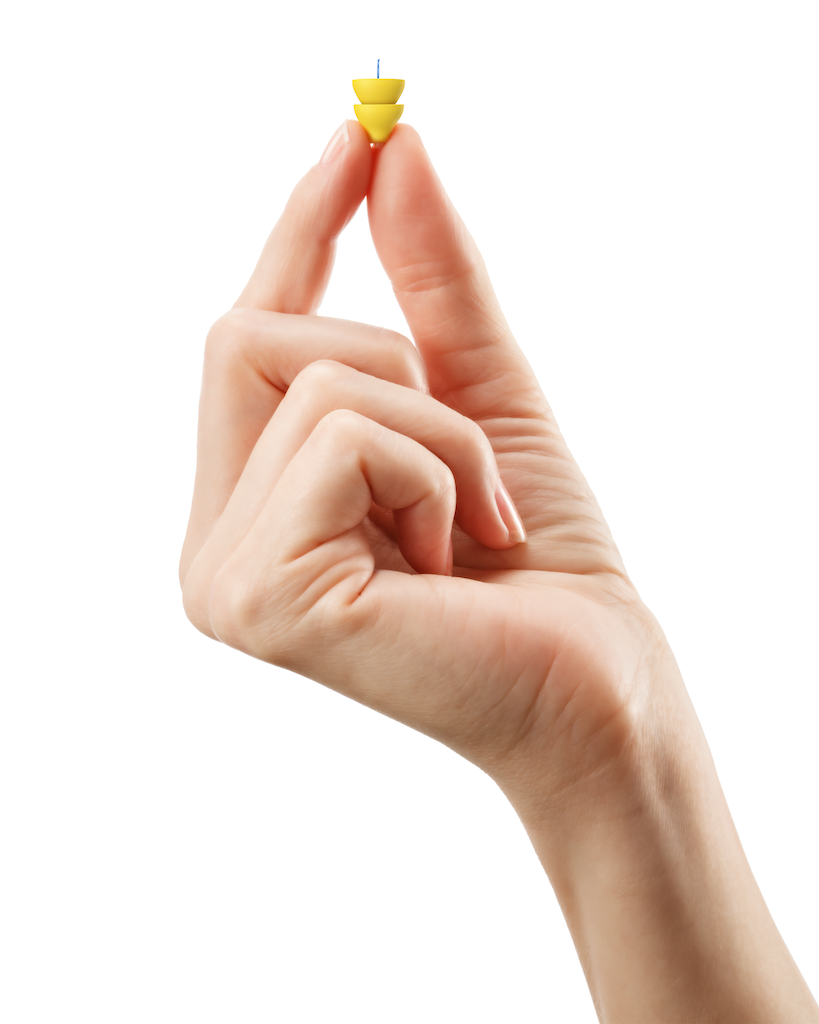Phonak Lyric product is virtually invisible
Thankfully, technology has given patients the option to get invisible hearing aids that are not only smaller but require less maintenance.
– Kelcey Cushman, Au.D., CCC-A, F-AAA, Midwest Ear, Nose and Throat
How would you feel if you couldn’t hear your baby cry during the night? Or what if you had to wear a bulky hearing aid behind your ear just to function on a day-to-day basis? And talk about embarrassing when you have to ask what did you say all the time or worse yet, simply nod in agreement when you can’t hear the conversation.
 Well for hearing loss patients, this is a reality. And it’s growing. In fact, the Center for Hearing and Communication says that about 20 percent of adults in the United States suffer from hearing loss. And the number climbs as we get older.
Well for hearing loss patients, this is a reality. And it’s growing. In fact, the Center for Hearing and Communication says that about 20 percent of adults in the United States suffer from hearing loss. And the number climbs as we get older.
While most can’t surgically correct their hearing, there is something manufacturers have done to help correct the way patients feel about wearing hearing aids. An example is one company that takes hearing loss to the next level, and has developed a product called the Phonak® Lyric. What makes it unique is that it’s virtually invisible.
Kelcey Cushman, a Doctorate of Audiology and Certified with American Academy of Audiology, works as an Audiologist at Midwest Ear, Nose and Throat. She says that vanity is an issue with hearing aids amongst all age groups. Thankfully, technology has given patients the option to get invisible hearing aids that are smaller and require less maintenance.
How it works is that the device fits snug in the ear canal so that it appears invisible to the naked eye. But aside from looks, they have a number of other benefits for hassle-free hearing. “Invisible hearing aids, such as the Phonak Lyric, are what we call extended wear hearing aids,” adds Dr. Cushman. What that means is the device is worn 24 hours a day, a huge benefit for patients who are unable to hear during the night.
Going invisible also means lower maintenance. While traditional daily wear hearing aids can require weekly battery changes, the invisible hearing aids have batteries that can last up to three months, depending on the strength. “It’s important to note that with any hearing aid battery, the life is also determined by the type of environment and how hard the aid has to work,” she adds.
Another benefit is safety. “Extended wear hearing aids are beneficial for people who work in loud environments because the patient can shut the aid off to protect hearing. Also, you can shower while wearing the extended hearing aids,” she adds.
But are these new invisible hearing aids right for you? Kenneth M. Scott, MD and Fellow of the American College of Surgeons, is trained in Otology and Neurotology for Midwest Ear, Nose and Throat. He says that it’s worth the time to check out the new technology because of its growth. “Over the last fifteen years, I’ve seen thousands of patients with hearing loss, says Dr. Scott. Technology seems to improve about every five years which is enough that it’s worth seeing a specialist to reevaluate whether you’re a candidate for this new technology.”
Yes, not every patient can wear an invisible hearing aid. Devices like Phonak Lyric are for extended wear only. Even though there are perks, Dr. Cushman says the most important consideration is to purchase the right hearing aid for your type of hearing loss, environment and listening needs.
There are other exclusions as well. Patients aren’t candidates if they’ve ever had an ear surgery, ear drainage, radiation or chemo to the head and neck. She also adds that the size of the ear canal can determine whether invisible hearing aids will work. And if you like the thrill of sky diving or exploring deep sea diving, you’d better opt for a traditional hearing aid as well.
If you suffer from hearing loss or think you may have a hearing condition, it’s advisable to see a specialist to determine the right hearing aid for you, your hearing loss and your lifestyle. Even if invisible isn’t an option, both Dr. Scott and Dr. Cushman credit the ever-evolving technology for making all hearing aids smaller and more efficient.
By Jennifer Dumke: Sioux Falls Woman Magazine
